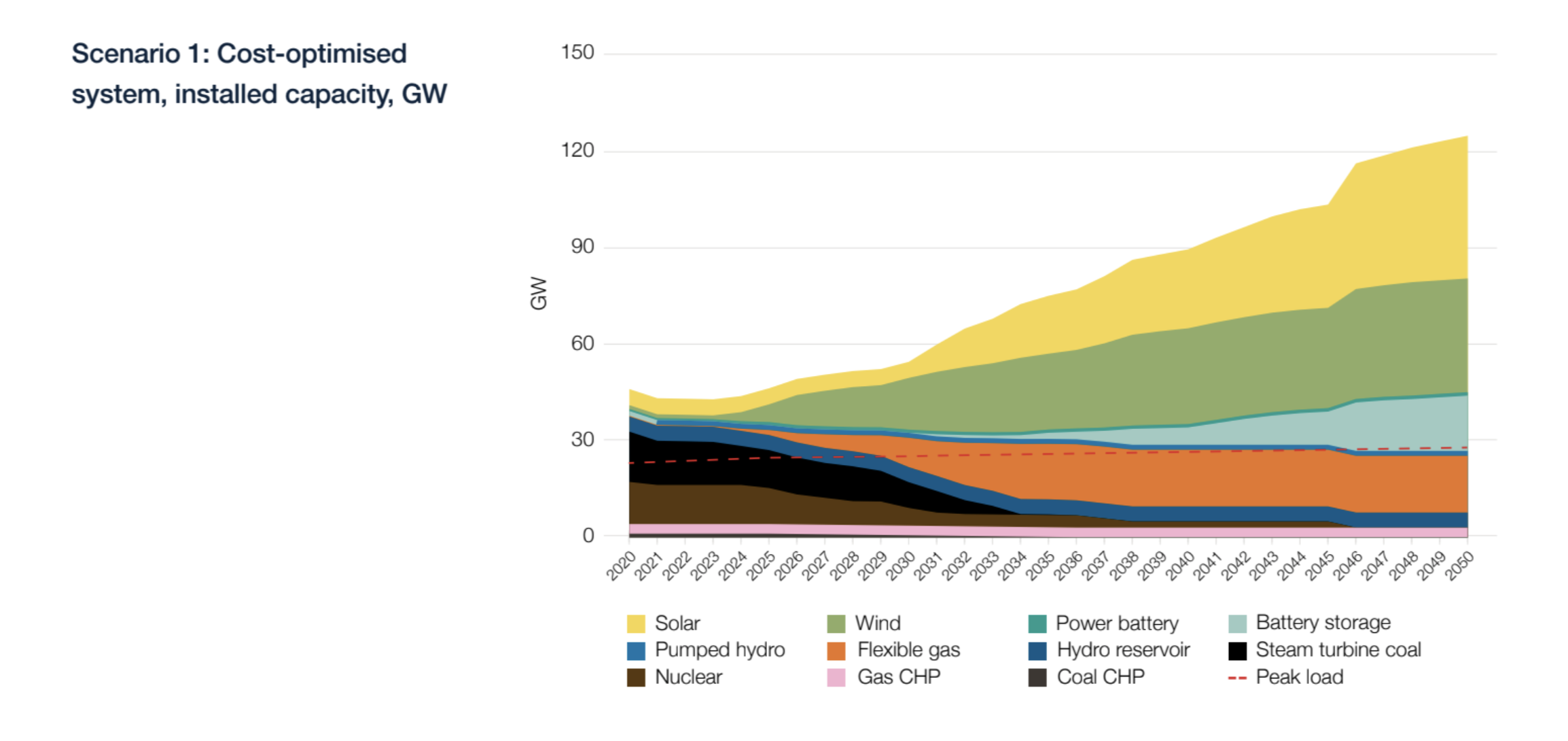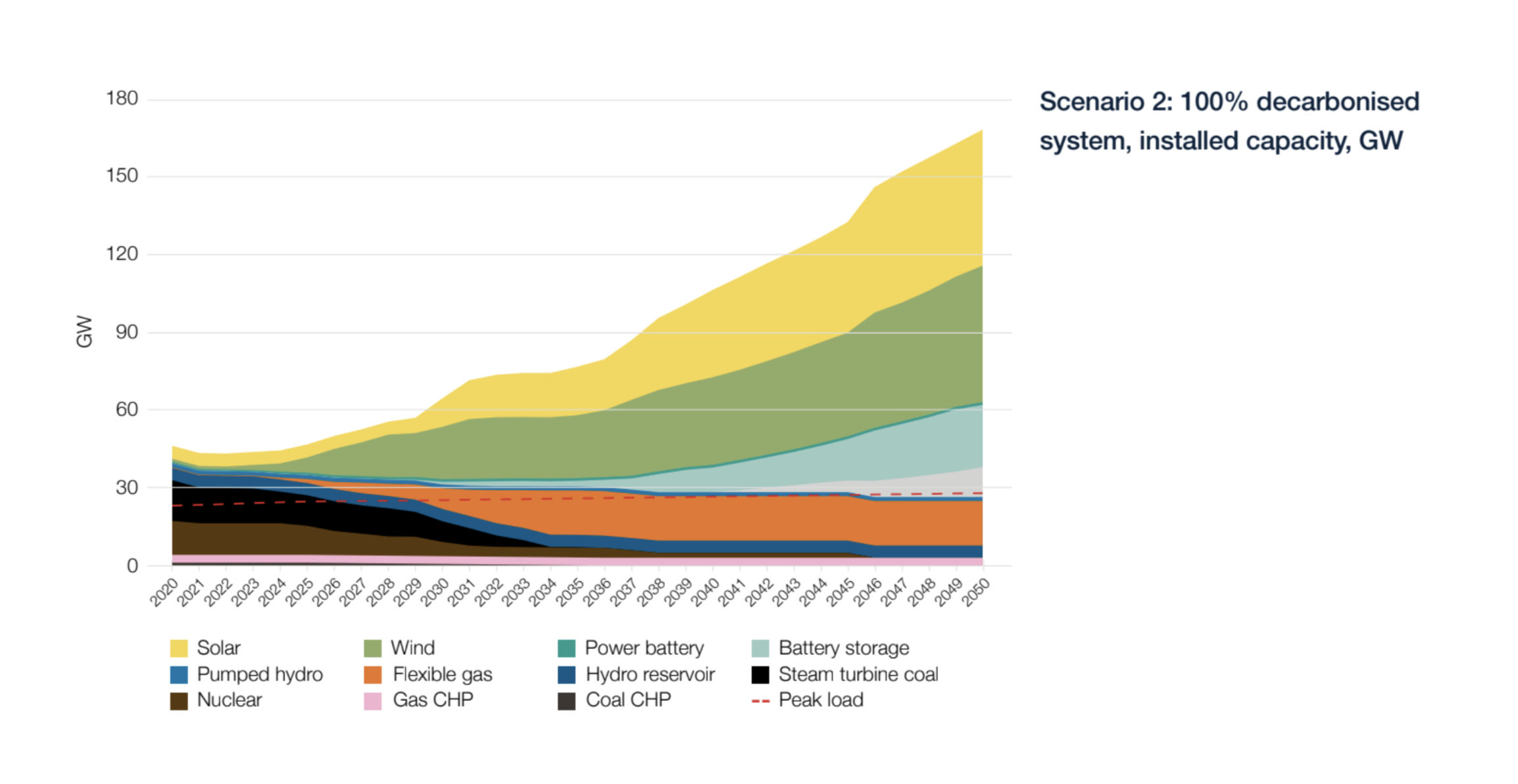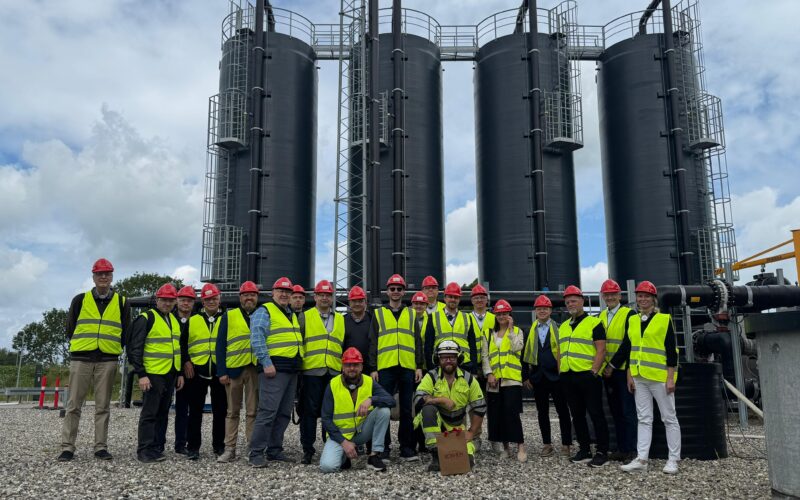The transition to RES by 2050 is cheaper than maintaining the current state of the power system
The Finnish company Wärtsilä Corporation has modeled two scenarios for the optimal development of Ukraine’s energy system with the lowest cost until 2050. The study used a proven energy simulation software PLEXOS, designed to find the cost-optimal solution for each scenario based on the applied constraints.
The first scenario – a cost-optimised power system with the lowest total system cost and no RES targets
In both scenarios, PLEXOS built an optimal power generation mix each year and optimized dispatch every two hours during the 30-year planning horizon.

The modelled power system provides the lowest cost of all potential options over the time period until 2050. The PLEXOS optimiser built up an increasing amount of wind and solar capacity as time progressed. Major solar buildout starts after 2025 due to the expected falling solar and storage prices. A strong overbuild of renewables and flexible gas starts around 2030. The total system size will reach 126 GW in 2050.
The second scenario – a 100% decarbonized system where system-level CO2 emissions fall to zero by 2050
In the 100% renewable energy scenario, PLEXOS had an additional target to achieve a fully decarbonised system by 2050.

To reach a fully decarbonised power system compared to the cost-optimised scenario, 26 GW more wind and solar power is needed and Power-to-Gas (P2G) conversion is also necessary.
The P2G process means that excess wind and solar electricity can be used to produce renewable synthetic gas through hydrogen electrolysis and methane synthesis. The gas is then liquefied and stored, and later regasified for use in flexible thermal power plants.

By the way, this is not the first study of this type. For example, in 2016, Finnish experts from Lappeenranta-Lahti University of Technology (LUT) presented a scenario of the power system transition to 100% RES by 2050 with similar results – lower final cost of electricity, the need to install additional balancing capacity, shunting generation and usage of Power technology -To-Gas. Details of the project by the link.
More information in the Wärtsilä report: in Ukrainian and in English.


